KEY POINTS:
- Long-term planning
- Spending commitments
- Environmental targets
- Integrated strategies
 Read the peer reviews for this feature.
Read the peer reviews for this feature.
Download the graphs for this feature.
To Patrick McLoughlin, the Secretary of State for Transport, and to Sir Peter Hendy, chairman of Network Rail:
My letter to you concerns strategic infrastructure development.
I’ll start by defining what I mean, before describing the outcomes I expect to emerge from an effective strategic infrastructure development plan, and some of its key ingredients.
By strategic infrastructure development I mean the following:
- It (obviously) has to be strategic. This is not simply a list of schemes that are ‘shovel ready’, rather it is a long-term view of rail’s place in the UK economy and environment (about which there is common ground), and a clear plan of how to get there.
- I’ll focus on infrastructure (tracks, trains, structures), but without losing sight of either the importance of technology (which may mean less ‘infrastructure’ spend) or the supporting ‘resource’ spend that Treasury is so fond of cutting.
- Development does not always mean more infrastructure. Development goes hand in hand with the strategy, but I am focusing on the long term, consistent with the long-term nature of the rail assets.
Of course, rail is currently embarking on its own planning process, with the Initial Industry Plan for the period 2018-2023 under development. That the process exists - and indeed is required by legislation - is a welcome opportunity for the industry to consider the short to medium term. It is only recently that strategic roads in England have started to benefit from a five-year planning and funding process, while other major infrastructure providers still have to cope with much shorter horizons.
Importantly, the UK rail industry and the wider economy benefits from the five-year planning and funding arrangements. This process, together with relatively long-term contracts for passenger services, constitute the key drivers of the benefits of the 1990s change in industry model that Oxera described and quantified for the Rail Delivery Group in 2014 (What is the Contribution of Rail to the UK Economy? July 2014).
As such, despite what is looking like a tight Spending Review for the Department for Transport (at least for resource spend), I would urge the preservation of the 2013 Periodic Review spending commitments (notwithstanding current uncertainty about the outputs that this spend can deliver).
I would also urge the continuation of the five-year spending commitment at future Periodic Reviews - even if (as regulators across infrastructure sectors are seeing) the precise nature of projects consistent with that spending is uncertain.
However, the Commons Transport Committee recently noted: “Witnesses representing key stakeholders for the rail industry feel that there is no clear long-term plan for the railway.”
It called on Network Rail to publish a vision up to 2043, with provisional plans for each five-year period beyond the current one, and up to this date. This view is consistent with long-term vision documents (increasingly required by regulators) in other sectors - for example, water companies’ Water Resources Management Plans, which look ahead 25 years, and which have to be updated every five years.
In the Government’s response to the committee’s recommendation, it agrees that planning for the longer term is important, and describes the cross-industry Long-Term Planning Process (LTPP). This is a programme of studies being taken forward to consider routes and network-wide issues (such as technological change), with a view to informing project development and franchise specifications.
Readers will have their own view on whether this is consistent with the committee’s recommendation, regarding a long-term vision towards which the industry and its stakeholders are working. Nevertheless, I now turn to what the outcomes of a long-term strategic infrastructure development plan should deliver.
First, I would expect a long-term rail infrastructure development strategy to recognise that rail does not exist in a vacuum.
Success for me in this area would entail the industry understanding a diverse set of developments elsewhere in the transport sector, and in other parts of the economy that feed into rail (energy and construction, for example).
This means that any emerging plan would understand the impacts of these other developments on what rail can and cannot achieve, and build on opportunities, while mitigating risks. The plan would also allow these other industries to understand their interactions with rail, and act accordingly.
Second, a successful plan should reduce uncertainty about where the sector is going, and what it is trying to achieve.
While this may not mean commitment from government to specific investments more than five years into the future, clear direction on outcomes and (ideally) consistent outputs should help users and investors - both in the railway and integrated with the railway - make better decisions, reducing the cost of investment.
Third, a well-run process of engagement with consumers and industry stakeholders on where the industry is going should deliver buy-in for what is going to happen.
People may not like the decisions taken, but they will have been involved in the process and be able to change their plans accordingly. Recent experience from water and energy shows that customer engagement can play an important role in the long-term planning process, and can help infrastructure providers to question long-held internal beliefs.
Renewal plans for infrastructure assets - Expenditure profiles through
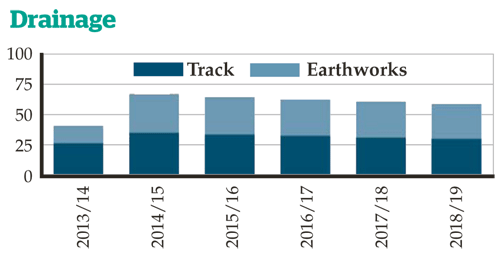
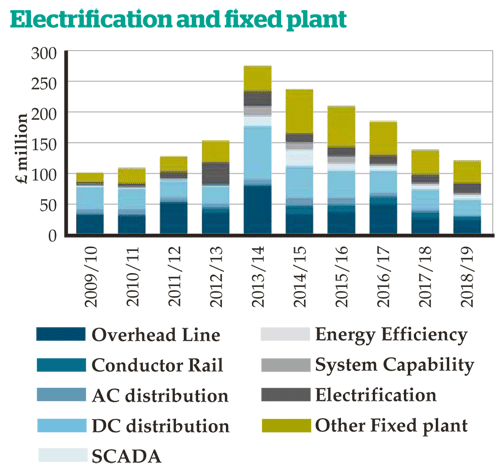
A final outcome, which may come as a surprise, is more effective democracy. A well-run process of putting together a strategic infrastructure development plan should (in my view) involve government making political trade-offs, in a transparent way.
All too often in the infrastructure sectors, government leaves key policy decisions to inquiry commissions or independent regulators. A more logical approach (requiring political bravery) would be that the process reveals a set of trade-offs, with politicians using their electoral mandate to decide where to draw the line.
As a long-term vision and investment plan is being developed, a number of criteria will need to be considered, in order to guide the process. What is it that rail should be trying to achieve? You will have your own list, but I suggest some that rail may wish to consider incorporating:
- Spending review ‘outcomes’: If you want to be particularly ‘on message’, a good place to start is probably the list of things that the 2015 Spending Review is seeking to achieve. These include innovation, promoting growth and productivity, the devolution agenda, quality, choice and competition, and efficiency and effectiveness.
From this list, I would highlight the inherent tension that rail will have to resolve between increasing capacity in response to increased demand, and demand management. Under different funding scenarios, rail investment will be higher or lower, as will crowding (and therefore productivity). What you will have to agree between you is where to draw the line.
- Environment: How does rail want to position itself in relation to carbon and local pollution?
Shifting away from diesel will certainly help in relation to the latter, and the car and lorry alternative is likely to struggle with this in the short term. But as I discuss below, electrification of the road and rail fleets may well affect rail’s relative carbon performance, particularly for rural routes.
- Integration and delivery: Government will clearly want the industry’s commitment to deliver against what it is funding.
Part of this picture is being comfortable that we have the skills in place across the UK to deliver a number of major infrastructure projects over the period to 2030 - including HS2, the digital railway, the major road investment programme in England, and a new runway.
- Who pays? One area on which rail needs to take a view is the balance of funding between taxpayer and user.
In recent years there has been a lack of clarity on this issue. The Coalition had a specific user/taxpayer balance target, while the previous Initial Industry Plan foresaw rail requiring zero net subsidy by the early 2020s.
The consensus now seems to be that taxpayer spending of £4 billion a year (to be pushed through passenger operators) is about right (the user/taxpayer target having been abandoned, and any talk of zero net subsidy being back in the land of the thought piece as soon as the PR2013 Strategic Business Plan emerged). Nevertheless, a clear statement of policy in this area would be appreciated, even if that required agreement on different levels of investment associated with different levels of funding.
You don’t need me to tell you that the future is uncertain. What I find really helpful for getting a handle on uncertainty is using a set of scenarios, and considering whether the infrastructure development we’re considering is robust to those scenarios.
Last year, for example, Oxera and PA Consulting examined four potential scenarios for the global aviation industry, considering the global trends that affect the industry, and developing a set of scenarios that reflect different ways in which those trends might play out. A similar exercise for UK rail might consider, for example, the speed at which automation is delivered in the car fleet (allowing business drivers to be productive at the wheel of their vehicle for the first time, eroding rail’s competitive edge), and the acceptability of diesel engines in towns and cities (and the rate at which electric or hybrid alternatives can be introduced for freight and passenger applications).
As for integration with other sectors, despite rail offering a rich seam of issues that could provide endless discussion, it does not exist in a vacuum. I would expect a long-term infrastructure development plan to include an entire section on interactions with other sectors.
Taking transport, for example, what is happening elsewhere in transport over the next 25 years? Will there be a new runway in southeast England? What rail development does this require? However (or whether) this issue is resolved, most UK airports are expecting rail increasingly to take the strain in carrying passengers to and from their flights, in order to meet environmental obligations.
That’s on the collaborative side of things, but how does rail perceive its role in relation to intra-GB aviation? The European Commission expects rail to increase its market share for short-distance air routes, so how does UK rail respond?
On the roads, Highways England plans to resurface a high proportion of motorways and all-purpose trunk roads in England over the next five years, and is using the smart motorways concept to increase capacity extensively in busy locations. While rail will benefit from the increased road congestion in the short term, in the early 2020s it is likely that rail will be competing against cheaper (hybrid/electric) cars and lorries running on less congested major roads. How does rail respond to this challenge?
And in the longer term, if the road fleets are also electrified, then where does rail’s environmental advantage come from?
Depending on the speed of the electrification programme, the majority of rail journeys will take place under electric power in the next couple of decades.
Already a major energy user, rail will become increasingly dependent on the price of electricity, with a diminished ability also to draw power from diesel. While the costs of the two are not unrelated, rail’s overall exposure to each individual fuel source has historically been diminished by not having to rely solely on just one.
How does rail tackle this dependency? A long-term infrastructure development plan will seek to diminish risks by reducing rail’s energy use over time via technology (for example, regenerative braking), self-supply (renewables incentives on train operators - wind turbines and solar panels on stations, anyone?) and close inter-working with DECC and the power companies. Other vital inputs such as skills will also have to be modelled, dependencies understood, and the balance of risk tackled in the plan.
In summary, the Long-Term Planning Process in which the industry is engaged, and funders’ response to its outputs, has the potential to deliver many of the outcomes I describe above, especially if they take place against the backdrop of a coherent set of criteria, and reflect a number of potential future scenarios.
But such a process requires both of you to believe in what is being created, and for the Government to be brave enough to respond in full (and transparently) regarding the choices it is taking.
I hope you find my suggestions useful.
Read the peer reviews for this feature.
Download the graphs for this feature.
 Peer review: Dr Siv Bhamra
Peer review: Dr Siv Bhamra
Principal Vice President, Bechtel
Andrew’s initial focus on the benefits of strategic planning, and the funding commitments to match, is excellent. The four outcomes of strategic planning - understanding of external developments, government commitment, stakeholder engagement and effective democracy - are also clearly virtuous ones, while the six proposed areas for criteria to guide the process - 2015 spending review objectives, capacity, carbon, delivery, skills and funding - are a good match with public policy concerns.
Beyond this, as the letter moves into discussion of scenario development to support strategic planning, there is perhaps scope to cover a broader set of possible concerns for the future, such as social and demographic trends.
Whether we want to live and work in cities or in low-density suburbs is crucial to the role and competitive position of rail. Land-use planning policies both reflect and shape those preferences, and form a crucial partner to strategic transport planning. And implementation of planning policy should bring directly with it appropriate investment in rail capacity and connections - we cannot afford to repeat the experience of one government-controlled body deciding to close the Oxford-Cambridge line just weeks before another decided to build the city of Milton Keynes!
The discussion of traction energy seems a little odd in places. Railway electrification surely offers diminished (not enhanced) energy cost risk, with the electricity supply industry able to exploit multiple sources and (hopefully) incentivised to optimise the use of each of them.
Indeed, the discussion of road transport automation might prompt consideration of just what the differential characteristics of ‘rail’ against ‘roa’ are, and how those differences might change. Road automation may bring much more than the ability of a driver to make a telephone call safely - not just vehicle guidance and separation, but also other features that hitherto have been the preserve of rail, such as route control, timetabling and capacity management. Current perceptions of collective versus personal transport, planned versus unplanned journeys, or high capacity versus low capacity systems may not so neatly fit into ‘rail’ and ‘road’ modes in future.
What additional infrastructure should be provided? The simple answer is clearly that the long-term planning process will provide the answer! However, existing traffic trends and land use point very clearly to the inadequacies of the railway that we were left with when the mass closures ceased in the early 1970s. Making up for decades of network ossification is not straightforward, but it may help to consider a number of development categories:
Rectifying closure errors: Re-opening of the Oxford-Cambridge line (as mentioned above) is an obvious example, but not the only one where strong or growing centres were denied the links they should have retained. Partial re-opening of the Waverley route, now completed, is another example. There is a need to just get on with these re-openings - government has a duty to seek to correct errors of the past.
Restoring capacity and resilience: Chiltern’s redoubling of the Great Western route to Birmingham showed the way here, and other already identified schemes in this category include redoubling of the Waterloo-Exeter line throughout, restoration of the LSW route beyond Exeter to Plymouth via Oakhampton, and restoration of Lewes to Uckfield. Again, there is a need for less talk and more action.
Reflecting demographic change: Well-developed schemes in this category are harder to identify, but systematic analysis of flows to identify missing links and to make plans to fill them is required. Land use changes in the long term, and a healthy railway - especially one that has lost so much of its network density - must respond with new or revived routes and nodes. The proposed re-opening of the Portishead branch, to serve new high-density housing forming a suburb of Bristol, is an example.
City networks: The growth and attractiveness of many cities outside London continues to be hampered by the absence of high-quality internal rail networks. We cannot allow the continued strangulation of these cities by inappropriate dependency on road transport. Heavy rail enhancement and new metro and light rail schemes offer good value solutions to the internal transport problems that many regional cities (and even large towns) face. Manchester provides a model of what can be achieved. At a ‘city region’ level, the HS3 idea responds to the same need.
Freight: Although traditional rail strength in coal continues to be eroded as a result of energy policy, intermodal transport continues to show strong growth. Much of this growth (in particular, the carriage of deep sea containers) defies the shape of the surviving network, or at least its modernised parts. Investment is needed in both gauge and route capacity enhancement, with the axes from Felixstowe and Southampton to the Midlands obvious priorities. Cost allocation to freight services also needs attention, in order that appropriate dedication of routes to freight or mostly freight can be made financially sustainable. Again, land-use planning is a crucial partner, and the links between railway, port, production and distribution facility planning need to be fully restored.
 Peer review: Cliff Perry
Peer review: Cliff Perry
Former railway chairman of IMechE
Railway infrastructure is a long term business and transport planning is essential for rail to achieve what it is good at in an integrated and modally agnostic strategy.
Even when all transport is powered by green electricity, rail will have significant advantages in terms of energy consumption (where cost will be a significant issue for many decades to come) and in its capacity to move large volumes between nodes. In terms of environmental advantage, it is not often understood that rail is improving faster than road, through electrification, regeneration and investment in clean diesels. In a densely populated island’s transport system, with significant congestion issues already, it is essential that the transport strategy plays to the strengths of rail and each mode, factoring in the Continental links required for both freight and passengers.
On the issue of long-term planning, it is important to understand that in terms of routes, capacity, and in some places even train control, we have a railway dominated by what was laid down over 150 years ago. Major changes (HS1, HS2, Thameslink, Crossrail) have a gestation period of over two decades, and a delivery timescale of one more. We recognise that such schemes are very significant in their local and economic impact, but they are marginal in terms of overall statistics and UK customer behaviour.
Three decades is the long-term horizon of the current scenarios in the Long Term Planning Process (LTPP), which I support as a process that needs further clarity, transparency and industry recognition. Nevertheless, the basic railway infrastructure 30 years from now will still be (for most people) exactly the railway we have now. We have to improve it to meet their aspirations. Last week I waited ten minutes for a Canadian freight train to pass, on which were loaded nearly 300 double-stacked containers - a superbly productive way of moving goods in the multimodal way the modern market is demanding, but totally incompatible with a mixed traffic infrastructure.
I have one point of apparent disagreement, and a couple of points that would have been in my personal letter.
My disagreement is that I believe we should de-politicise the transport planning process. Broad public acceptance of the role and level of investment in transport by each mode is necessary, as is the answer to the basic demand/capacity/price question that sets the parameters for the role of rail in a national transport strategy.
However, the record of political decision-making in terms of the delivery of suitable transport is poor, particularly on a national strategic scale. Managing future scenarios that include changes in customer behaviour, technology, demographics, benefits, costs, and modal inter-dependency is a complex process and should be managed as such. It is much too important for the popular vote to intervene and to drive rail into sustaining roles for which it is poorly suited, such as low-density distribution tasks and rural railways. Democratisation would be expected to constrain infrastructure development, even in circumstances where it is essential to bulk movements of people and goods between nodes at the speed and flexibility demanded by the market.
My view of the letter’s omissions can be summarised in two words: confidence and resilience.
Robust, modally integrated plans that have cross-party political support are part of the gestation process for railway schemes, and are vital for industry confidence. The supply industry has been burnt many times by feast and famine, abortive investment in abandoned visions, or being asked to do instantly something that has not been done in Europe for 30 years. (for example, main line electrification of an existing busy route). We need long-term vision, (50 years), medium-term scenarios (20 years), but complete confidence in the five to ten-year planning horizon. Confidence is the key factor that drives the private sector investment essential for efficient delivery in both plant and skills. Major short term revisions drive scepticism and direct investment into other avenues.
A resilient railway infrastructure is key to service reliability and meeting the customer expectations. Much of what we have been bequeathed by our Victorian forebears was wonderfully future-proofed, but now clearly deficient in terms of technical reliability, capacity, loading gauge constraints, the increasing frequency of extreme weather events, and the maintenance challenge.
The improvement task has to be properly recognised and built into maintenance and refurbishment planning, as well as major schemes to segregate traffics, liberate railfreight from passenger railway constraints, and provide diversionary routes.
We have a great railway with a great future. Great thinking is needed to maintain its contribution to national life.
 Peer review: Ian Brown
Peer review: Ian Brown
Director of Policy, Railfuture
A long-term view of rail’s place in the UK economy and environment, and a clear plan to get there - a worthy
objective and one demanding more consideration before the word ‘strategy’ emerges. Andrew highlights four areas: long-term planning; spending commitments; environmental targets; and integrated strategies; so delving into process from the start. It is process that is becoming the problem in the rail industry, whether it is planning or at the lower tactical project level. More process is unlikely to help.
On the need for a clear plan, the point is made that rail does not operate in a vacuum. This is true, but should not be a reason to promote woolly, uncertain thinking on rail from the start. Rail has latent advantages on the environment, on fuel efficiency, on resilience, and particularly on sustaining the economy and sustainably developing cities. Rail also has the ability to provide capacity. Andrew says this does not always mean more infrastructure, but it usually does - either directly with new projects such as Crossrail, or indirectly by unleashing system capacity with infrastructure or systems improvements at key pinch points, such as at Reading.
As rail’s transport market share is generally low, this begs a very simple question of government: “What does the nation want rail to do at a macro level?”
The questions at this level are about capacity: how much of it and where (into cities or network, for example), and for whom (who wants this and are they in a position to make choices)? As well as transport capacity questions, this is also about the economy and the environment. What does the client at national level want in terms of economic benefits, on jobs and on skills?
The need for a strategy to achieve clearly defined long-term objectives lies with Network Rail. Linking all this into separate five-year Control Periods will not achieve this - that is tactical delivery. Clarity of responsibility is essential here, and Network Rail, as the body responsible for infrastructure, must gear itself up progressively to deliver infrastructure capacity where required in an increasingly cost-effective way. Commencing a host of parallel electrification schemes across the country without the project skills to deliver them effectively is the result of this failure.
Andrew mildly criticises going for shovel-ready schemes in haste, rather than strategic ones. Far more worrying is that these schemes were neither shovel-ready nor co-ordinated in a way to build up resources, teams and skills. The valid point is made that skills do not seem to have been a major consideration. This speaks volumes about NR being obsessed with process but not having a process that actually delivers to time or to budget, normally the two key objectives of any delivery process.
I agree with Andrew’s conclusion that Network Rail needs a long-term development plan. Development means having the ability to deliver what is required, rather than a list of projects, with the management resources and skill base to do it. This means a strong and developing core resource within NR, systematically learning lessons, achieving best practice and so rolling out repetitive projects such as electrification and systems capacity control schemes effectively.

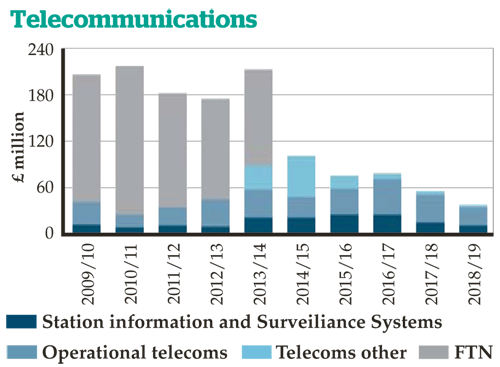
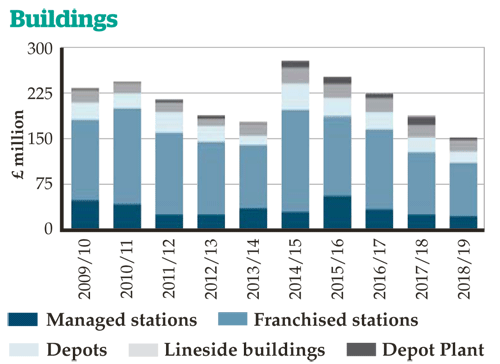
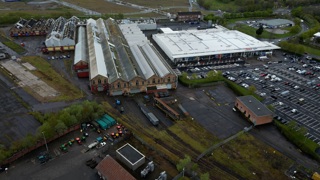
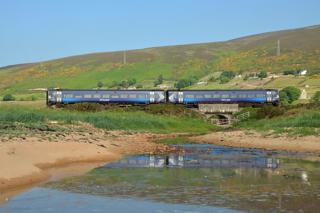
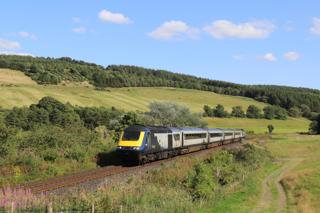
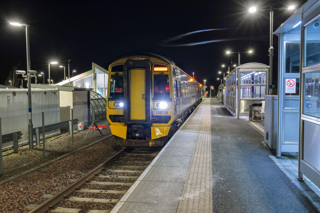
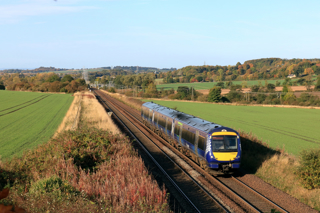












Login to comment
Comments
No comments have been made yet.